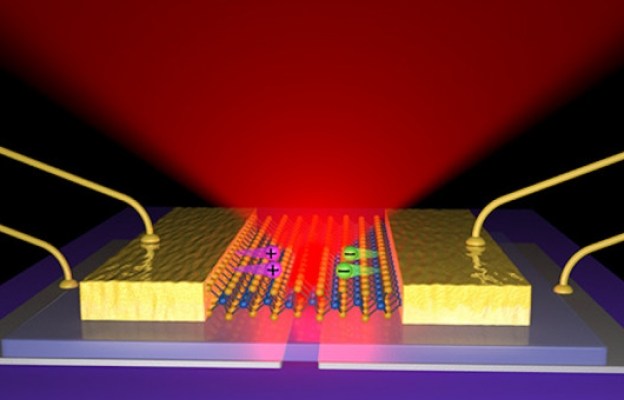The LED developed by the UW is 10,000 times thinner than a human hair.
With the latest LED technology, thicknesses will not longer be measured in millimetres, but in a much smaller scale. A team of scientists at the University of Washington has just published a study in the prestigious magazine NATURE, in which they claim to have developed the thinnest LED in the world, measuring just 3 atoms thick.
The current trend to create cutting-edge devices that are thinner and more lightweight to avoid increasing their weight and improve their ergonomics, necessarily requires the reduction of the size of their components. The light-emitting diodes, or LEDs, that are used in these devices are also subject to the new market demands, prompting researchers to reduce their size and improve performance.

The new LED for use as an electronic light source – 10,000 times thinner than a human hair – is able to emit the light required to manufacture flexible displays and chips that use light as a conducting element. Built using a process similar to the one used for mono-molecular sheets of graphene, US scientists have managed to create LEDs that are much smaller, more flexible, stronger and efficient for the development of new three-dimensional conducting structures, which will revolutionise the portable electronics technology industry in the immediate future.
The LED developed by the UW is made of thin sheets of tungsten diselenide, a molecular semiconductor that is relatively abundant in the earth in a group of two-dimensional materials that are the thinnest in nature. This material has already been used because of its capacity to generate energy from light. The possibility of making sheets of the material in layers that are so thin that 95% of the light passes through them, makes it possible for a tenth of that remaining 5% to be absorbed by the material to be converted into electricity.

In addition to applications involving light emission, this technology opens an whole world of possibilities for new uses of light. For example, running computers by transmitting light through a chip, which achieves the same objective as standard devices, but much more efficiently. However, we’ll have to wait a while to see these devices on the market.
Images | Nature









